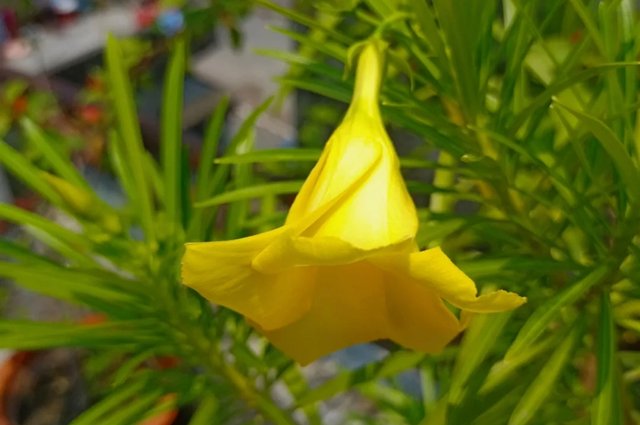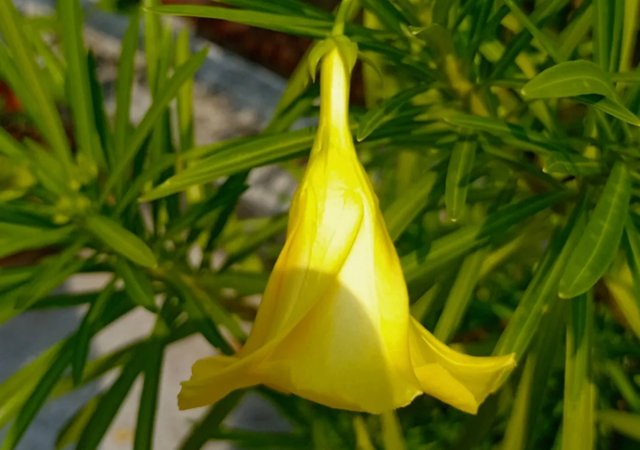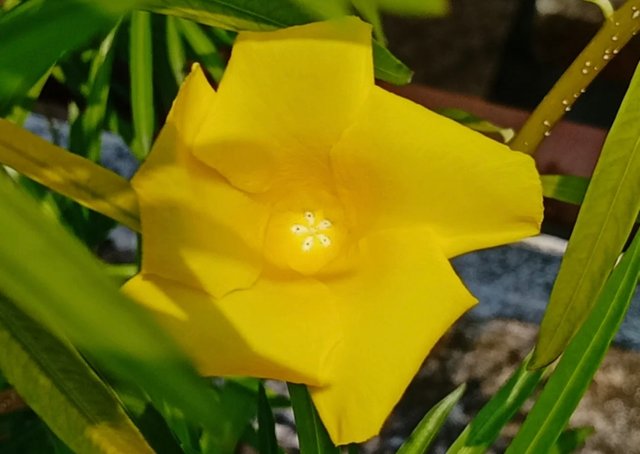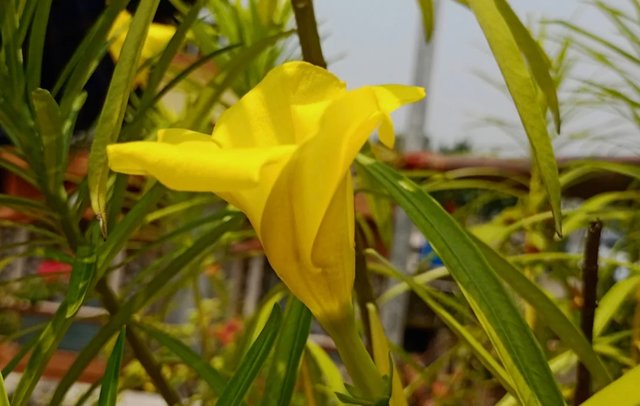The Yellow Oleander (Thevetia peruviana), also known as “Lucky Nut” or “Be-still Tree,” is a striking ornamental plant admired for its vibrant yellow blossoms and glossy green foliage. Despite its beauty, this tropical flower carries a mysterious charm and a powerful warning it is highly toxic. Native to Mexico and Central America, the Yellow Oleander has spread to warm climates around the world, captivating gardeners and nature lovers alike.
The Yellow Oleander produces trumpet-shaped flowers that bloom throughout the year, especially in sunny, well-drained locations. These blooms are a bright, cheerful yellow, standing out dramatically against the plant’s deep green, narrow leaves. The flowers often have a delicate fragrance and attract pollinators like butterflies, making them a lively addition to gardens and landscapes.This evergreen shrub or small tree can grow up to 10–20 feet tall, forming a rounded crown that adds tropical flair to parks, roadsides, and private gardens. Its ability to tolerate drought and poor soils makes it a hardy plant for tough conditions.




Every part of the Yellow Oleander plant from the flowers to the seeds contains cardiac glycosides, substances that affect the heart and can be fatal if ingested. Even small doses can be dangerous to humans and animals, making it essential to handle this plant with care, especially around children and pets.Despite this danger, traditional medicine systems have explored its compounds for controlled use under expert supervision. However, due to the high risk of poisoning, self-medication with Yellow Oleander is strongly discouraged.
Author and Photographer |
@nftkal | ||
Camera |
Redmi Note 14 Pro Plus | ||
Lens |
Defult Lens | ||
Category |
Nature | ||
Edited |
Lightroom CC | ||
